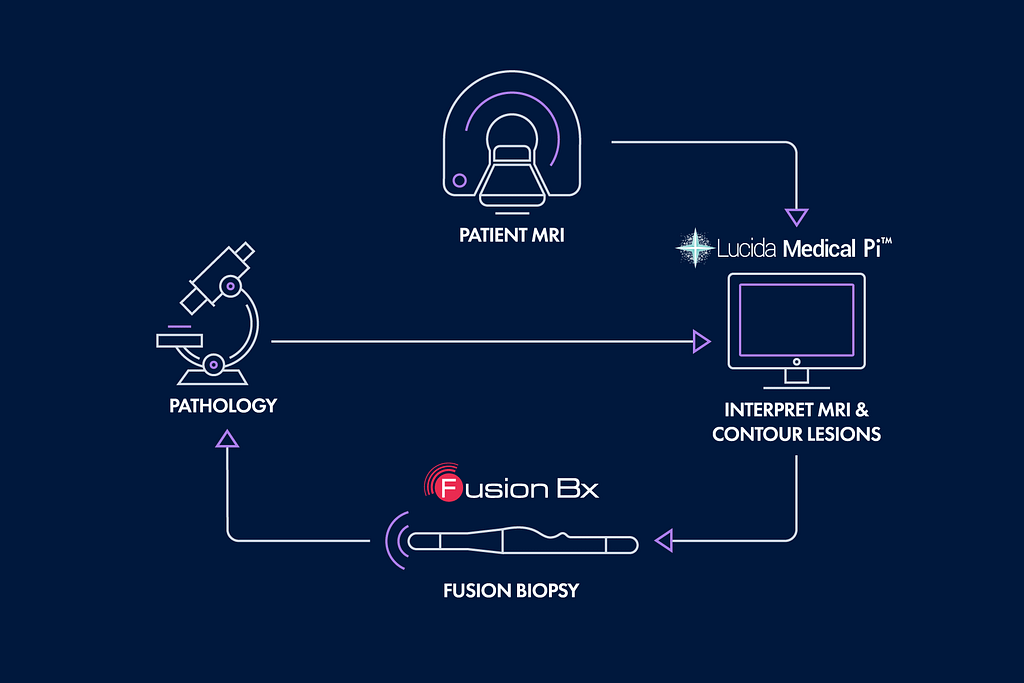What is Pi™?
Pi™, Prostate Intelligence, is a CE-marked AI software system that supports the prostate MRI reading workflow of radiologists. Developed by Lucida Medical, Pi™ uses machine learning to improve patient selection for biopsy, identify regions of interest and generate high quality segmentations.

The software first helps radiologists prioritize patients using risk scores. Low risk patients may forgo biopsy for now, reducing the risk of overtreatment and allowing high risk patients to be seen sooner. After the MRI, Pi™ characterizes lesions by location and size. Its high negative predictive value ensures all regions of interest are targeted for biopsy, reducing the risk of underdiagnosis. In the final step of MRI interpretation, Pi™ automatically segments the prostate. Compared to human expert annotations, the software has a high DICE score, meaning the contours are on par with experienced radiologists.
How Does Pi™ Integrate With the Fusion Bx?

Prostate MRI interpretation is the second step of the fusion biopsy workflow. Normally, radiologists would use Fusion MR Viewer to manually annotate the MRI for targeting, but this can seamlessly be replaced by Pi™. After the MRI is reviewed by the radiologist, the output of Pi™ is uploaded to the Fusion Bx for biopsy. By reducing the risk of operator error, radiologists and urologists can provide more accurate and consistent care faster. Together, our products help streamline the prostate biopsy workflow, so that more patients can get the treatment they need sooner.
Where is Pi™ Used?
In 2021, Lucida Medical worked with GE Healthcare to install Pi™ across 8 NHS trusts from across Midland (EMRAD East Midlands Imaging Network). The software automatically processed every MRI and saved the results to PACS and RIS. This meant radiologists could access and review the annotated MRIs as usual, without disrupting their workflow. More recently, a study with Hampshire Hospitals NHS Foundation Trust, showed Pi™ can be easily applied to NHS diagnostic pathways. Spanning a range of hospitals, MRI scanners and field strengths, the level of accuracy was in line with expert radiologists. In collaboration with Cambridge University, the ReIMAGINE prostate imaging trial and soon to be several UK NHS Trust hospitals, Lucida continues to further develop, validate and test Pi™. To learn more about how to get involved in a clinical study or integrating Pi™ in your Europe/ UK based clinic, contact [email protected].
Why Use Pi™?
1 Find cancer quickly & efficiently with MRI and Artificial Intelligence (AI). Lucida Medical. (2023, June 27). https://lucidamedical.com/
2 Optimizing the MRI Diagnostic Pathway in the UK. Focal Healthcare. (2023, May 11). https://focalhealthcare.com/optimizing-the-mri-diagnostic-pathway-in-the-uk/
